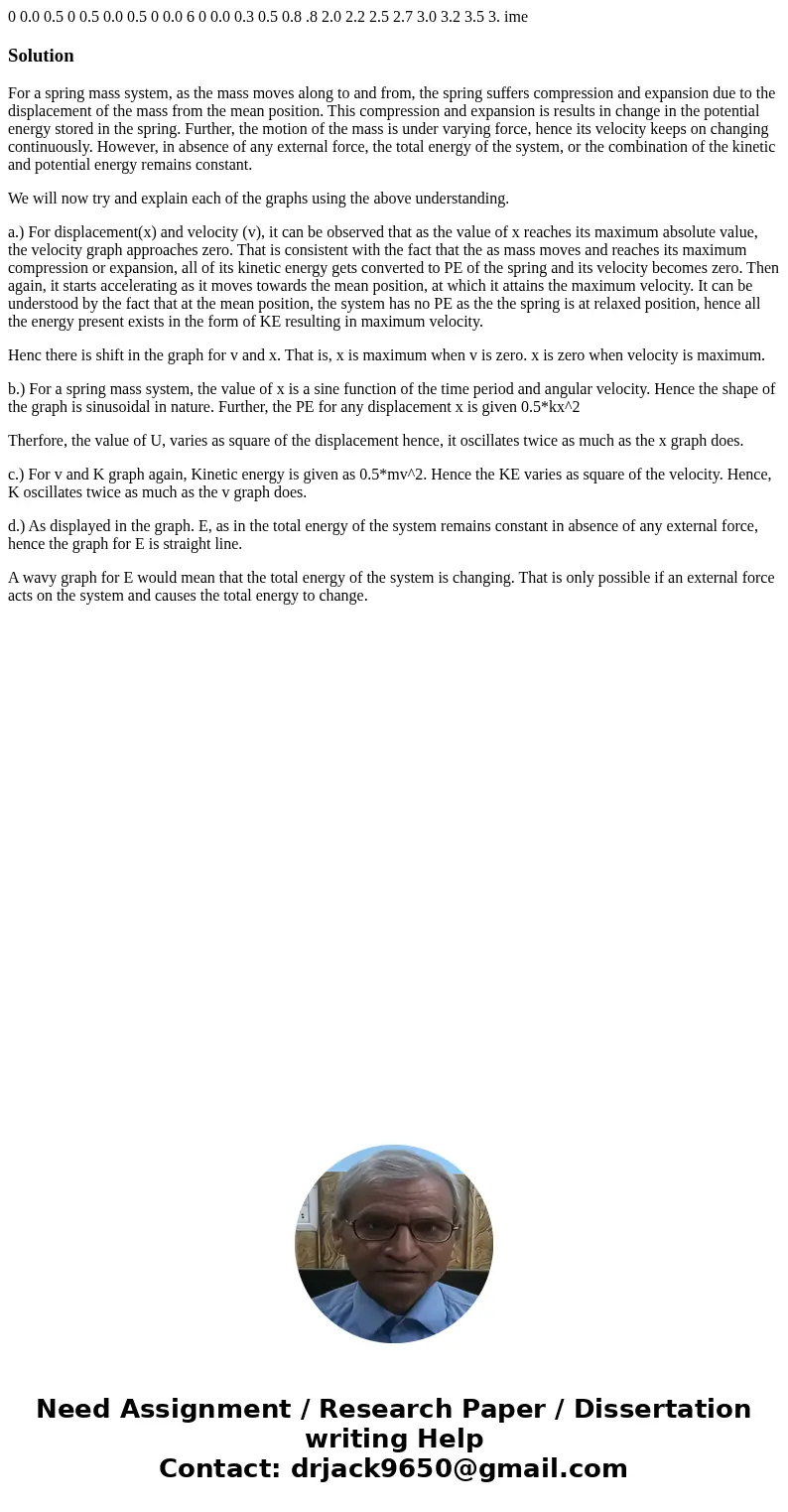0 00 05 0 05 00 05 0 00 6 0 00 03 05 08 8 20 22 25 27 30 32
Solution
For a spring mass system, as the mass moves along to and from, the spring suffers compression and expansion due to the displacement of the mass from the mean position. This compression and expansion is results in change in the potential energy stored in the spring. Further, the motion of the mass is under varying force, hence its velocity keeps on changing continuously. However, in absence of any external force, the total energy of the system, or the combination of the kinetic and potential energy remains constant.
We will now try and explain each of the graphs using the above understanding.
a.) For displacement(x) and velocity (v), it can be observed that as the value of x reaches its maximum absolute value, the velocity graph approaches zero. That is consistent with the fact that the as mass moves and reaches its maximum compression or expansion, all of its kinetic energy gets converted to PE of the spring and its velocity becomes zero. Then again, it starts accelerating as it moves towards the mean position, at which it attains the maximum velocity. It can be understood by the fact that at the mean position, the system has no PE as the the spring is at relaxed position, hence all the energy present exists in the form of KE resulting in maximum velocity.
Henc there is shift in the graph for v and x. That is, x is maximum when v is zero. x is zero when velocity is maximum.
b.) For a spring mass system, the value of x is a sine function of the time period and angular velocity. Hence the shape of the graph is sinusoidal in nature. Further, the PE for any displacement x is given 0.5*kx^2
Therfore, the value of U, varies as square of the displacement hence, it oscillates twice as much as the x graph does.
c.) For v and K graph again, Kinetic energy is given as 0.5*mv^2. Hence the KE varies as square of the velocity. Hence, K oscillates twice as much as the v graph does.
d.) As displayed in the graph. E, as in the total energy of the system remains constant in absence of any external force, hence the graph for E is straight line.
A wavy graph for E would mean that the total energy of the system is changing. That is only possible if an external force acts on the system and causes the total energy to change.

 Homework Sourse
Homework Sourse